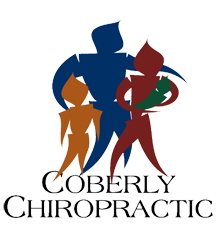
Research Studies
Can correction of spinal misalignment lower blood pressure?
In a pilot study conducted at the University of Chicago, a one-time specialized chiropractic adjustment, delivered to patients suffering from high blood pressure and misaligned C1 vertebrae, resulted in significant reductions in diastolic and systolic blood pressure. The decrease in blood pressure was equivalent to that seen in patients who had been administered two blood pressure medications. None of the patients took any antihypertensive medications during the study period.
A pilot study. Journal of Human Hypertension, March 2, 2007
Chiropractic Improves Athelete’s Performances:
A research study conducted by Drs. Anthony Lauro and Brian Mouch, published in the Journal of Chiropractic Research and Clinical Investigation, 1991, indicated chiropractic care might improve athletic performance by as much as 16.7% over a two week period. The report also concluded that subluxation-free athletes react faster, coordinate better, execute fine movements with improved accuracy and precision, amounting to an overall better athlete.
Chiropractic Adjustments Help Earaches:
Researchers have uncovered proof that chiropractic adjustments can help earaches more effectively than medication.
In a six-month study, 57 children with recurrent ear infections were divided into two groups. One group received medical care, and the other group received chiropractic adjustments.
The group that underwent chiropractic adjustments had fewer earaches and was less likely to need ear tubes than the group using medicine.
How is this possible? Chiropractic adjustments realign the spine into proper position, allowing a clear flow of messages from the brain, down the spinal cord, to every area of the body. These messages help the immune system operate at maximum capacity, fighting off illness, upholding health, and maintaining proper function and movement.
Source: Online Chiropractic Community
Value of Surgery vs. Nonoperative Treatments
A randomized clinical trail published in the Journal of the American Medical Association suggests surgery is no more effective than nonoperative treatments for patients with lumbar disc herniation.
Source: The Journal of American Medical Association
Heartburn Medications Linked to Hip Fractures
A study performed by the University of Pennsylvania, School of Medicine concluded that individuals using common heartburn medications over a long period of time increase their risk of hip fractures. The problem appears to be the result of decreased calcium absorption. The researchers found that the higher the antacid dose and the longer the drugs were taken, the more likely a fracture would occur. The average risk increased by about 44 percent for patients taking heartburn medication.
Journal of Amercian Medical Association, Dec. 27, 2007.
Infections, Bacteria Critical for Healthy Life
Mothers around the world are armed with anti bacterial gels, sprays and baby blankets, diligently protecting their children from nasty forms of bacteria. But recent research shows that society’s anti bacterial and anti infection crusade makes children and adults more likely to develop asthma and allergies and perhaps even mental illnesses.
Dr. Gerald Callahan, who studies bacteria and infectious diseases at Colorado State University, argues that all living things on earth must have infections to thrive, and society’s challenge is to sort the good infections from the bad infections. People’s love affair with anti bacterial products is changing and not necessarily for the better how immune systems, gastrointestinal systems and even nervous systems develop and function.
“Microorganisms shape the lives of all living things and infections steer the course of the world. Most people understand that infections are at the root of many terrible diseases like malaria and leprosy. But infection may also play a significant role in many chronic aliments, including some that may surprise you such as schizophrenia, ulcers and obsessive compulsive disorder,” said Callahan, an immunology professor in the College of Veterinary Medicine and Biomedical Sciences and the College of Liberal Arts.
What many people may not realize is that most infections ensure our health instead of compromise it.
Back Pain during Pregnancy and Labor
Reference: J Manipulative Physiol Ther. 1991 (Feb); 14 (2): 116-118
84% of patients receiving spinal manipulative therapy reported relief of back pain during pregnancy. There was significantly less likelihood of back labor when spinal manipulative therapy was administered during pregnancy.
Chiropractic care during pregnancy has been shown to significantly reduce the length of time a woman labors. First time moms averaged a 24 percent shorter labor, while mothers who have already given birth experienced a 39 reduction reduction in the average labor length, compared to controls (Fallon, 1991). Chiropractic adjustments during pregnancy can also reduce the likelihood of experiencing back labor (Diakow, 1991). Regular chiropractic adjustments can safely continue up until the time of birth (Penna, 1989)

